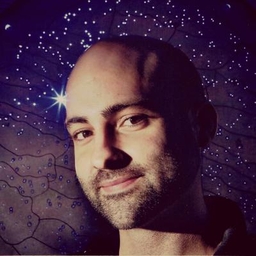
Articles
-
1 week ago |
cosmoquest.org | Paul Sutter
Podcaster: Paul M. SutterTitle: AaS! . AaS! 250: Where Do the Constants of Nature Come From? Part 2Organization: INFN Trieste and OSU CCAPPLink : Twitter @PaulMattSutter, http://www.Facebook.com/PaulMattSutter, and http://www.askaspaceman.comSupport the show: http://www.patreon.com/pmsutterYouTube: http://www.youtube.com/c/PaulMattSutterDescription:Part 2 of 2! What are the modern constants of nature? Is the universe fine-tuned for life?
-
2 weeks ago |
esquire.com | Paul Sutter
Un científico dice tener pruebas de que todo el universo podría ser una simulación, incluidas nuestras propias vidas¿Qué es un agujero negro y cómo se forma? ¿Qué son las estrellas y cómo funcionan? El universo es inmenso. Hasta donde podemos ver en cualquier dirección, estamos dentro de una pequeña porción —una especie de burbuja— del conjunto total del universo. Esa burbuja tiene unos 90.000 millones de años luz de diámetro. Y sin embargo, por contradictorio que suene, el universo es plano.
-
2 weeks ago |
universetoday.com | Paul Sutter
In this series we are exploring NASA's top five challenges as detailed in its Civil Space Shortfall Ranking, which is basically NASA's Christmas wish list. These are the technologies that NASA believes we need to develop if we want to go to space…and stay there. And finally, after multiple rounds of voting from NASA centers, industry partners, and academic researchers, the highest priority goal we need to accomplish to make all our space dreams come true: surviving the Lunar night.
-
2 weeks ago |
universetoday.com | Paul Sutter
In this series we are exploring NASA's top five challenges as detailed in its Civil Space Shortfall Ranking, which is basically NASA's Christmas wish list. These are the technologies that NASA believes we need to develop if we want to go to space…and stay there. Coming in second place is nothing less thanmore power. Which is kind of obvious: we want bigger and faster computers, we want more powerful robotics, and we want more sophisticated navigation systems.
-
2 weeks ago |
space.com | Paul Sutter
There may be an infinite amount of energy locked in the vacuum of space-time. So could we ever harness this energy for anything useful? The idea of vacuum energy comes from quantum field theory, which is a marriage of quantum mechanics with Einstein's theory of special relativity. In quantum field theory, particles are not really what we think they are. Instead, they are better represented as fields, which are quantum entities that span all of space and time.
Try JournoFinder For Free
Search and contact over 1M+ journalist profiles, browse 100M+ articles, and unlock powerful PR tools.
Start Your 7-Day Free Trial →X (formerly Twitter)
- Followers
- 14K
- Tweets
- 7K
- DMs Open
- Yes

New episode of Ask a Spaceman out now! Part 2 of 2! What are the modern constants of nature? Is the universe fine-tuned for life? Does the multiverse or string theory explain the origins of the constants? Listen wherever you get your podcasts. Find links in my bio! #space #pod https://t.co/HeNS9Y7j1a

Thanks to @LukeLockhartPod for having me on the show! Watch the full episode where we talk all things Big Bang, Black Holes, and more at his YouTube Channel now. https://t.co/FjJNskDNpH

New episode of Ask a Spaceman out now! Part 1 of 2! How do fundamental constants appear in physics? Why are they so important? Why do we care where they come from? Listen at https://t.co/0mXkkiPJAj or wherever you get your podcasts. Both linked in my bio! #space #science https://t.co/68MmHuLUhM